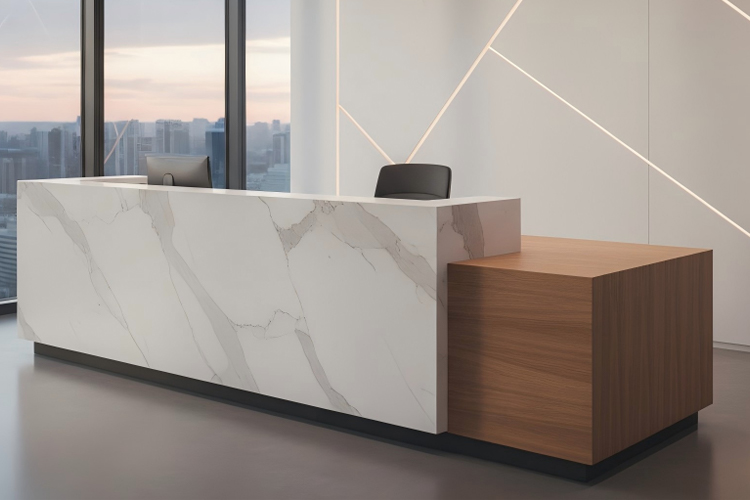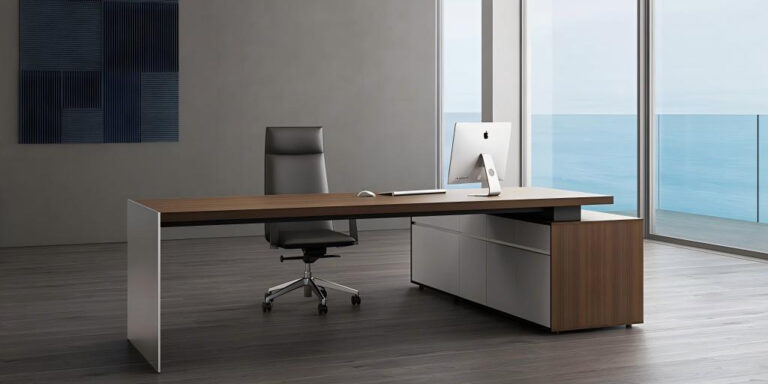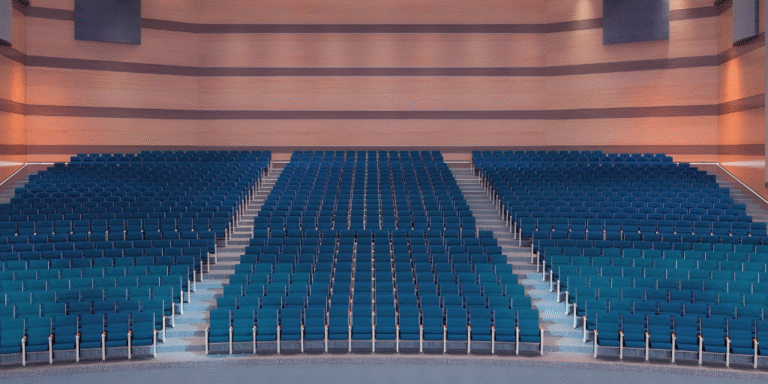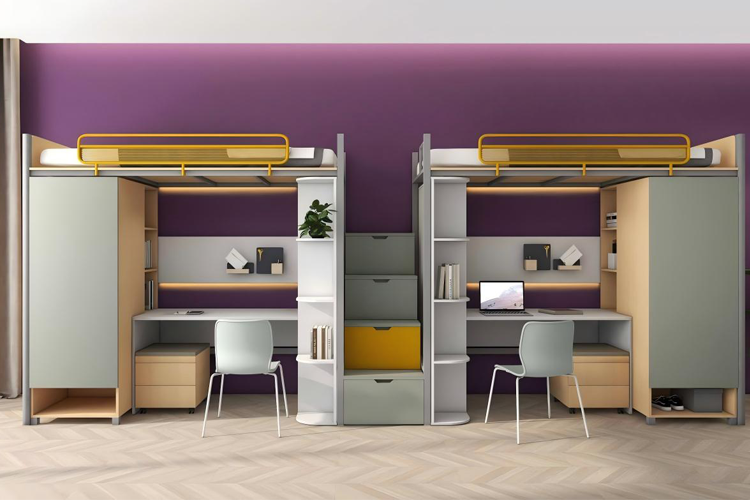Which Metal Storage Cabinet Is Best? Lateral vs Vertical File Cabinets Compared
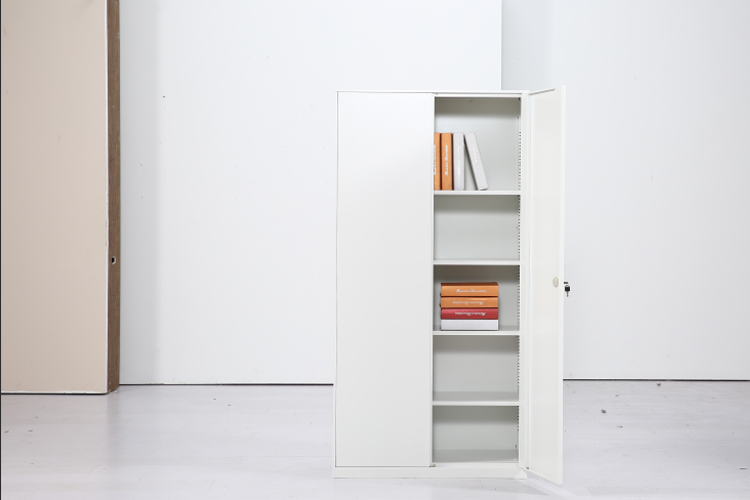
A metal storage cabinet is durable and reliable in the long run and it protects files against loss and damage. Lateral cabinets are also horizontally distributed in shared offices and vertical designs extend upwards to occupy smaller rooms. They both favor varying storage capacities and workflow habits.
Let’s find out how their capacities, lock systems and space needs are compared and how the right choice of the cabinet can maximize productivity and office design.
What is a Vertical or Lateral Metal Storage Cabinet?
With the changing office layout, the selection of the appropriate metal storage cabinet is imperative in terms of organization and efficiency in the workspace. These cabinets are constructed in such a way that they contain important files and supplies and maximize the available space. The knowledge of the difference between vertical and lateral cabinets assists the users in choosing the model that fits their storage patterns and room layout.
Definition of Lateral File Cabinet.
Lateral cabinet, on the other hand, is broader and tends to be shorter and provide more layout of drawers. The files in such design will be used side to side, thus more visible and can be retrieved faster. This format is commonly used in offices that have more space in their rooms or shared workstations since it can store high volume of filing without the need to pile them up. Lateral metal storage cabinet offers a wide range of arrangement possibilities and the top surface is wide, which can also serve as an extra working or display space.
Standard Sizes and Dimensions.
The size of a metal storage cabinet has a direct impact on usability and space planning. Vertical cabinets are typically 15-18 inches wide, and 28-60 inches high depending on the number of drawers. The lateral models are between 30 and 42 inches in width and approximately 20 inches in depth. These standard dimensions assist in making sure that the fit is correct and the accessibility is not difficult, be it in organizing files, tools or office materials.
What are the Key Strengths and Weaknesses of Each Type?
The decision between two kinds of metal storage cabinets may frequently be determined by the amount of space used and the frequency of file use. Both designs have both practical advantages and some restrictions that affect comfort, organization, and workflow. These differences can be used to make the buyers choose a model that suits their office requirements.
Pros of Vertical Cabinets
Vertical cabinets usually conserve floor space, and fit in smaller spaces. Their high design enables them to have more drawers without occupying a lot of width. This arrangement is very convenient to many users in personal offices because they can access individual files in a front-back manner. A vertical metal storage cabinet is also relatively cheaper and can be moved around. Its height utilizes well the vertical room space without loss of document security and order.
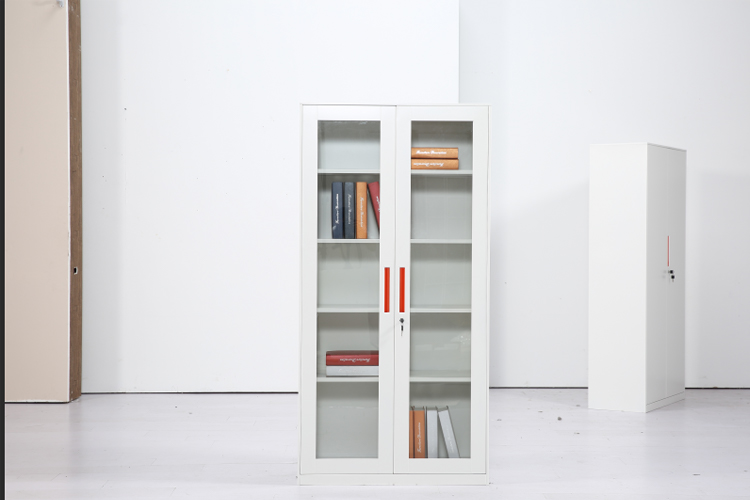
Cons of Vertical Cabinets
A vertical cabinet is small but when dealing with a big number of files it may be restricting. The drawers are narrow, which reduces visibility and it takes more time to locate folders that are located deep inside. Discomfort may be experienced after a long period of time in busy offices where there is a lot of bending or reaching top drawers. A vertical metal storage cabinet also has fewer files per drawer than wider ones that may slow down daily operations when several people are using the same unit.
Pros of Lateral Cabinets
Lateral cabinet offers more spacious drawers, which enhance visibility and access. The files may be positioned adjacent to each other and it is easy to navigate and access the documents. This type is able to hold heavier weight and everything is within reach thus minimizing strain. The lateral metal storage cabinet is frequently made with a counter or work surface, which provides storage and workspace in a single cabinet.
Cons of Lateral Cabinets
Lateral cabinets are efficient, but they take up more space on the wall and might not fit in small rooms. Their wide drawers may get overweight and thus difficult to open or close easily. The lateral metal storage cabinet is also a bit more expensive because of the size of the frame and the increased use of materials. It has these disadvantages but it is still a favorite in high capacity offices where side access and easy filing is required.
What Storage Capacity will each permit?
In selecting a metal storage cabinet, it is useful to know how design influences the amount of space that can be used. Although both vertical and lateral models have enormous volumes of documents, the way the space is utilized depends on the orientation of the drawers. The ability to measure and compare capacity is the key to the appropriate balance between accessibility, size, and long-term storage requirements.
File Volume (e.g. Sheets, Hanging Folders)
The capacity of a cabinet in most office environments is determined by the number of sheets or folders that a given drawer can accommodate. The hanging folders that are installed in a metal storage cabinet constructed to hold letter-size or legal-size files are usually front-to-back or side-by-side. The internal volume is determined by the length and width of the drawer that determines the space of the paper stacks or folders. Lateral designs usually have a higher number of hanging folders per drawer whereas vertical models have more drawers arranged vertically creating additional storage space in a small area of the floor.
Depth of drawers x Width vs Height.
A metal storage cabinet is heavily dependent on the geometry of the drawers to increase storage capacity. A vertical cabinet is based on depth and height and many narrow drawers are stacked one above the other. This design is more appropriate in small offices with limited floor space. Lateral cabinets, on the contrary, are height-trading with width, with deeper drawers that run side-to-side. The additional width enhances visibility and access at the cost of increased wall space. Both methods will store to maximum depending on the room available and the filing patterns.
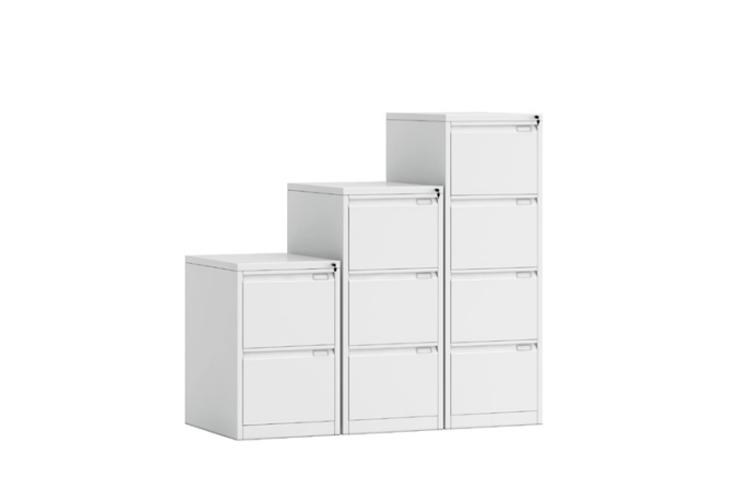
Actual Capacity Instances.
In practice, a typical four-drawer vertical cabinet could store approximately 10,000 sheets of paper, whereas a two-drawer lateral unit can store the same quantity using narrower but broader drawers. The high-volume storage cabinet which is made of metal usually has stronger tracks and increased drawer bearings to support weight without risking it. The number of drawers is not the only parameter that should be taken into account when comparing the models as the orientation of the folders directly influences the efficiency of the space utilization and the ease of access to the files.
How Do I Plan Space and Layout for These Cabinets?
Proper planning ensures that a metal storage cabinet fits both the room and the way it is used each day. Before selecting a cabinet, it is essential to map the available floor space, consider drawer swing zones, and allow enough clearance for movement. A thoughtful layout makes access easier, prevents crowding, and improves overall workspace organization.
Footprint & Clearance Requirements
Space planning when installing a metal storage cabinet would start with the knowledge of its footprint. The lower section of the cabinet should be large enough to enable drawers to open completely without banging into walls and other pieces of furniture. At least two or three feet of clearance in front of the drawers are preferable to safe and comfortable use. The cabinets may also be taller and require additional headroom to ensure that the top drawers are not hard to access. Measurement is used to prevent tight spaces, tipping, or blocked aisles that can be hazardous to your workspace.
Wall vs Floor Use
The choice of whether to install a metal storage cabinet along the wall or in open floor space would be determined by the layout of the room and the accessibility requirements. Wall placement is best used in small offices where traffic is easy to move without much hindrance. Conversely, placing a cabinet between the wall can be used to separate spaces or allow common access between desks. Lateral cabinets can be positioned against longer walls, whereas vertical units can be placed in the corners that are not used. This is aimed at ensuring that storage can be maintained without restricting comfort and visual openness of the workspace.
Placement in Office Zones
The storage cabinet made of metal must be located in a strategic place to ensure that files and supplies are in the place where they are most needed. The close-to-workstations cabinets can be utilized on a daily basis and the secondary areas can be used to store materials that are not regularly used. When the offices are shared, the similar storage units can be easily grouped at one location and reduce clutter. Lighting and accessibility are also to be considered; the drawers should be able to open without blocking aisles and doors. The office layout will be done to make the office look more structured, efficient and expandable.
How Easy Is File Retrieval and Access?
The convenience of access is a very important factor when selecting a metal storage cabinet. The layout of the drawers, visibility and the ergonomics define the efficiency with which you can access and arrange documents during the day. Lateral cabinets can be fast scanned and retrieved since the files are stacked side-to-side at eye or seated height. On the contrary, vertical cabinets might need more bending or stretching to find files, based on the height and position of the drawers.
Drawer Reach & Visibility
Drawer design affects how comfortably you can view and handle documents. In a metal storage cabinet, lateral drawers usually offer better visibility since they open wide and display all files at once. You can quickly scan across labels without removing folders. Vertical drawers, however, are deeper and hold files front-to-back, which can limit your view and make it harder to find specific papers at a glance. For those who manage large collections of files daily, lateral drawers save time and reduce strain during frequent access.
Multiple-User Access
In shared offices, a metal storage cabinet must allow easy use by more than one person. Lateral cabinets support this best because their broad drawers open from the front, giving two users access at the same time if space allows. They are also easier to position along walls for group use. Vertical models can become restrictive in team settings since drawers pull straight out, creating tighter movement zones. Planning the cabinet’s location carefully helps maintain smooth workflow and prevents congestion during busy hours.
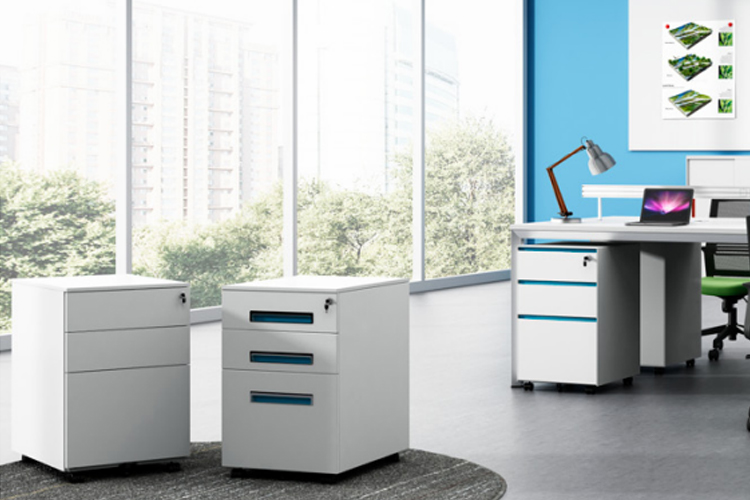
Ergonomic Considerations
Comfort and posture matter when retrieving files from a metal storage cabinet. Lateral designs promote better ergonomics because most drawers align with a seated user’s reach zone. This reduces repetitive stretching or bending that often occurs with tall vertical units. Proper height selection and stable drawer slides further enhance safety and comfort. For workplaces where filing happens often, ergonomic positioning can improve efficiency and prevent fatigue, making daily organization tasks feel more natural and less tiring.
When Should I Use One Type vs the Other?
The decision to use vertical or lateral metal storage cabinets will be based on how many times you will use the files, the area of the floor, and the number of people who will be sharing the storage space. Vertical models are small and can fit in smaller offices whereas lateral ones are more convenient to use in high volume or team. A combination of both will help to be more efficient and organized in various areas of your workspace.
Best Use Cases for Vertical
Vertical metal storage cabinet is ideal in cases where there is limited floor space but the ceiling height permits higher units. These cabinets are applicable in a personal or departmental filing system where documents are not accessed at all times. Since they have front-to-back drawers, they can fit in the corners or next to desks without blocking the walkways. They are also handy in long term storage since upper drawers could store archival files and lower drawers could be used on daily use.
Best Use Cases for Lateral
A lateral metal storage cabinet is ideal for offices that require frequent file access or shared retrieval. Its wide drawers display all folders at once, helping multiple users work efficiently without overlapping movements. Lateral units fit well under windows or along longer walls, keeping the center of the room open. Their easy visibility and reach make them popular in active departments such as administration or accounting, where quick file handling is routine.
Hybrid or Mixed Solutions
In larger work environments, combining both types of metal storage cabinets offers flexibility. Lateral units can serve as primary shared storage, while vertical ones handle backup or personal filing near individual desks. This mixed approach maximizes capacity, minimizes clutter, and adapts to varied workflows within the same space.
What are their Locking or Security Options?
Among the primary functions of a metal storage cabinet is security, where this can be considered when there are sensitive files contained in an office. Modern cabinets are installed with different locking systems which provide a compromise between convenience and protection. Beginning with the plain mechanical locks, and all the way to the advanced digital access controls, they will serve the different degrees of security and user preferences.
Mechanical Locks (Key, Cam)
Conventional metal storage cabinets may have mechanical locks like key or cam. These are reliable in terms of security in the day to day storage of documents and are easy to maintain. Small offices or personal installations that require only one or two people to have access are often keyed. Cam locks are small and strong and are installed on the face of the drawers. They are still a good affordable option to workplaces that do not consider complexity as a priority.
Central / Master Locking
Other metal storage cabinets have a central or master locking system where all the drawers are unlocked by turning one key. Such an arrangement assists managers or administrators to control access in an efficient way and save time. It also eliminates the possibility of leaving one of the drawers open or unlocked. Central locks are also applicable especially in common areas, records rooms and any environment where one would need to maintain a secure environment but not have to deal with multiple keys.
High Security (Electronic, RFID)
To enhance security requirements, most metal storage cabinets have been fitted with electronic key pad, RFID cards or biometric scanners. These systems enable rapid and keyless access and monitoring of use and access hours. They are useful to companies that deal with sensitive information because they are convenient and have the ability to audit. Electronic locking cabinets are compatible with the current office security standards with adjustable access codes and programmable controls.
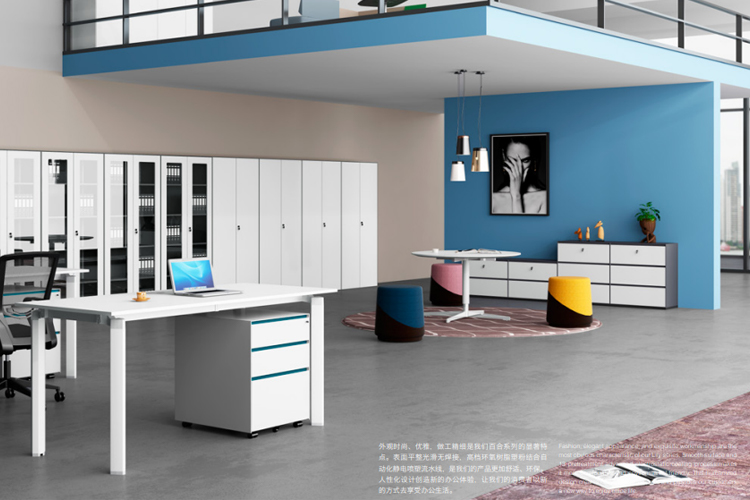
How to Choose a Metal Storage Cabinet on OnMuse Furniture
Selecting the right metal storage cabinet becomes easier when you understand how OnMuse Furniture structures its products. The site focuses on function, style, and durability—helping users find cabinets that suit both small offices and large commercial environments. Each product page highlights dimensions, build materials, and locking options, allowing you to compare models efficiently before purchase.
Matching OnMuse’s Product Features
Every metal storage cabinet listed on OnMuse Furniture is designed for lasting performance. The key features include powder-coated steel construction, smooth-glide drawer systems, and modern security mechanisms. These cabinets combine strength with a clean aesthetic that fits most professional interiors. Whether you need vertical or lateral storage, OnMuse emphasizes practical organization and longevity, making it easier to select a cabinet that supports everyday use without compromise.
How OnMuse’s File Cabinet Pages Fit into Decision
When exploring OnMuse’s file cabinet collection, you can filter products by size, configuration, and material. This organization helps you focus on models suited to your workspace layout. Each listing provides detailed specifications such as drawer dimensions, lock type, and available finishes, ensuring full transparency during selection. Reviewing these details gives you confidence that the cabinet you choose meets your space and capacity needs.
Suggested Models and Filters
OnMuse Furniture’s platform allows you to narrow your choices using smart filters for color, capacity, and cabinet orientation. This makes it simple to locate the exact metal storage cabinet you require without sorting through unrelated products. The curated range includes both vertical and lateral models that reflect industry-standard build quality. By using the site’s filters, you can quickly find a secure, durable, and space-efficient cabinet tailored to your office.
What decision criteria should I use when selecting?
The best cabinet meets your practical requirements without wasting space or budget. Focus on storage capacity, available room, how often you’ll access files, and the level of security required.
Checklist of Must-Have Features
Identify essential traits such as adjustable shelving, reinforced drawers, and lock options before comparing designs.
-Prioritizing Trade-offs
Decide where flexibility matters most—size versus durability, or finish versus lock type—based on your daily workflow.
Cost vs Long-Term Value
Consider lifecycle value rather than upfront price. A sturdier cabinet with fewer maintenance issues often costs less over time.
Conclusion
Choosing the right metal storage cabinet comes down to finding balance—between available space, storage capacity, ease of access, and the level of security your work demands. A well-chosen cabinet streamlines organization and maintains a clean, efficient workspace. Explore OnMuse’s file cabinet collection to find the right fit for your office.
FAQs
1. What will be the case when I open more than one drawer?
A: The Majority of metal cabinets have anti-tip designs that only allow access to a single drawer at a time.
Rationale: Interlocking systems or weighted bases are used to avoid the occurrence of tipping accidents.
2. Is it possible to change a vertical cabinet drawer to a lateral filing?
A: Yes, often, and it is being augmented by lateral filing bars.
Explanation: Conversion slightly decreases the capacity of the drawers; therefore, ensure that the bar size and compatibility are confirmed.
3. Does the humidity or moisture have an impact on my metal file cabinet?
A: Yes, long-term exposure to moisture may result in rust.
Reasoning: Risk reduction measures include powder-coated enclosures sealed at the joints and areas of dry placement.

